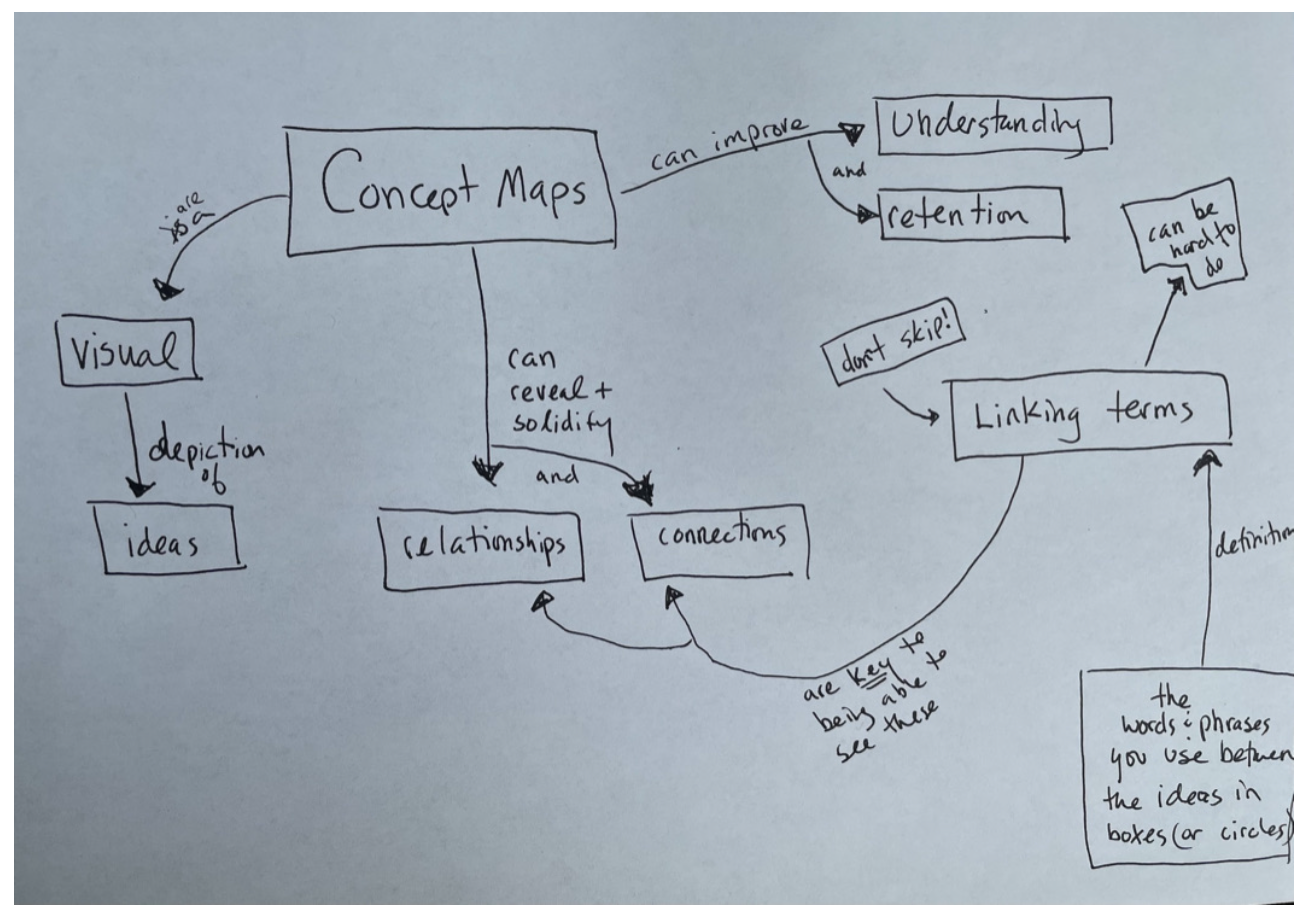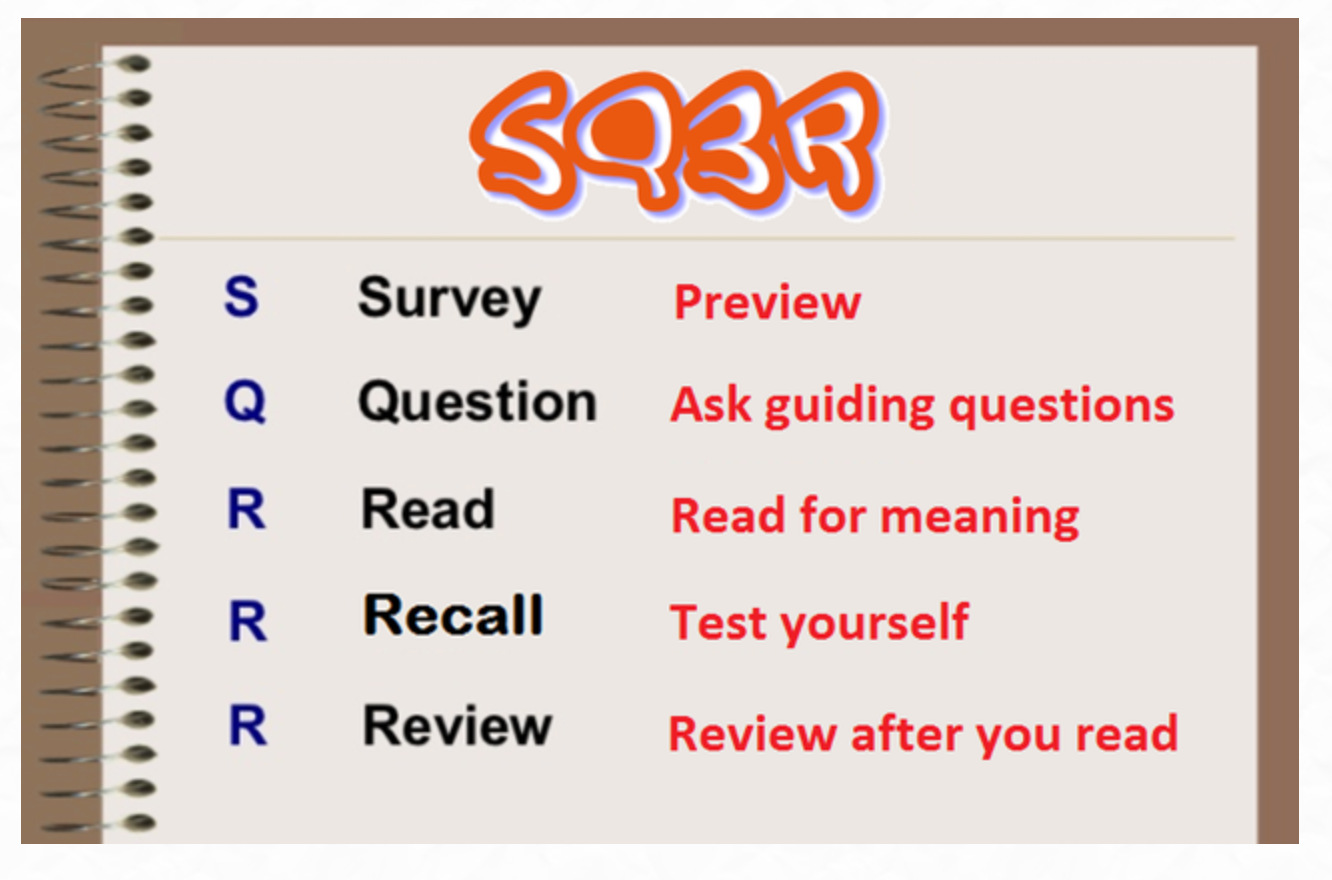Active recall is one of the best ways to study. It is a learning strategy that encourages active engagement with the material and efficiently imprints that information into long-term memory. Despite a growing body of research demonstrating the efficacy of active recall, college students are rarely taught study skills in school. Without explicitly being taught how to study using active recall, many students are left wondering how to most optimally learn and actively prepare for tests.
The learning process is complicated and nonlinear, so every student must find an effective method to learn and apply complex concepts. While many specific study techniques exist, most studying can be categorized into two basic approaches: active recall or rote memorization.
Why use Active Recall?
When I first start working on study skills with students, I find out how they are currently studying, and rereading notes or the textbook is the most common method. Sometimes students will copy those notes, word for word, onto flashcards or a separate study guide and then reread those notes. While this effort may have some value, reading and rereading is frequently a passive process and doesn’t automatically involve students stopping, thinking, and trying to retrieve and explain this information without looking at it, which constitutes active reading. Active recall involves stopping and testing yourself on the material without referring back to it.
What is Active Recall?
Active recall is a general term to describe learning which involves students reading the material, then using free recall to describe what they learned and remember from the text or notes. It requires students to read the provided information and process it. Then students write down or explain out loud what they remember without looking back.
Active recall forces you to be active during the study process, rather than passively reading and rereading notes or a text. It involves retrieval practice, which is when you practice recalling the correct answers without looking back, and is a more effective method for remembering information. Retrieving information requires individuals to make use of various cognitive processes such as visualization, and active recall therefore results in superior transfer of knowledge over time.
Some educators refer to active recall as the testing effect. A variety of research and psychological science articles point to active recall as one of the most effective methods for most students to improve their academic outcomes. Another study shows that active recall can be even more effective when paired with concept mapping, also known as mind mapping, which is when students create and utilize visual aids such as graphic organizers to assist with learning complex materials.

Evidence shows that using concept maps, or mind mapping, is one of the best active recall strategies. It engages multiple modalities and uses linking terms to show relationships between different concepts.
What is Rote Learning and Memorization?
Rote learning is an umbrella term and essentially refers to studying through repetition. Rote learning and memorization are often used synonymously. Learning something via repetition usually involves memorizing something with or without genuinely understanding or being able to apply it.
A student, for example, could memorize their multiplication tables via repeated testing until they are easily recitable. However, a student could accomplish this rote task with or without truly understanding the concept of multiplication, knowing how to apply it in real life scenarios, and being able to multiply numbers beyond the memorized tables.
Rote learning and memorization have their benefits; some concepts, terms, and formulas, such as those learned in medical school, need to be memorized and ready for retrieval at any time for students to be able to learn and apply more complex ideas and skills. Yet, rote learning and memorization are substandard and ineffectual approaches to fostering critical thinking and problem-solving skills that enable students to apply their knowledge to identify and solve complex and nuanced problems.
How to Practice Active Recall
Active recall is relatively simple to implement. I always tell students to read the information- whether notes or a piece of text and then close the book and try to explain the information to someone else or write it down.
Students can even do this with a friend or a group by having a conversation about the topic or can engage in practice testing. Retrieval practice makes us think about the information, try to understand it, and put it into our own words and schematics using analogies, examples, and meaningful vernacular.
Active study strategies are just that – active. They require more effort to implement on the front end. Students who are used to relying on rote memorization tactics may initially feel challenged by active recall strategies.
Instead of just passively copying down information or simply reading and rereading, we now must actively form our own words and thoughts to explain and integrate the knowledge into our schematics and long-term memories.
Active recall strategies will likely take more time and effort to implement, especially initially, but the payoff will be twofold (or more):
- Students will gain a better and longer-term understanding of the material.
- Students will strengthen their processing and retrieval skills every time they engage with active recall.
When Should Students Use Active Recall Studying?
Studying, or reviewing material you are currently learning, is best done every day that you attend that class or read relevant/assigned texts. Reading the assigned material, taking notes, and attending class, are essential first steps. Still, they alone are not enough to meaningfully process and retrieve the material and commit it to long-term memory.
What are the Best Active Recall Strategies and Techniques?
Many educators and researchers have devised various methods for implementing active recall in learning endeavors. Still, all active recall methods share the same goal of getting students to actively engage with notes, texts, and ideas by practicing retrieval of the information and putting the ideas into their own words.
Some active recall strategies involve learning aids such as flashcards, whiteboards, and spreadsheets. While they all have different names, their fundamental premises are the same.
1. Taking Practice Tests
Taking multiple practice tests, which are low stakes, can be incredibly helpful for a variety of subjects, especially when there is a lot of material to recall. Frequent testing until students commit the material to their long-term memory can be particularly useful for college students who have a lot of science terminology to learn.
Students are more likely to remember what they’ve studied if they commit to practice testing (also known as “retrieval practice”) regularly. Students can either test themselves or have an instructor do it for them. In either case, testing helps to improve long-term memory for the material.
What are some of the benefits of practice testing and retrieval practice?
- Learning, understanding, and remembering the material faster and thoroughly.
- Reducing test anxiety since students get more practice taking tests.
- Identifying strengths and weaknesses, so students can focus on the areas where they need the most help.
- Becoming better test takers, learning how to pace themselves, and eliminating careless mistakes.
2. The SQ3R Study Method
Many students use a strategy called SQ3R when they approach a text. SQ3R is an acronym that stands for Survey, Question, Read, Recite, and Review. This strategy is very effective, and it works with any subject.
What are the five steps of the SQ3R study method?
1. Survey
First, briefly survey the text, including looking at the main sections or headings and skimming or previewing it to glean a basic idea of what may be discussed.
2. Question
Develop a few questions based on what they think they might encounter in the text. These could be generally based on a chapter heading, such as “how will this chapter connect to the last one?”
3. Read
Actively read the text, think about the answers to your questions from the previous step, and look for main ideas, important details, and connections.
4. Recite
Stop at various points while reading to summarize what you’ve read thus far. This is a crucial step in which you “test” yourself by seeing if you can summarize the main points.
A simple test for this is to answer the who, what, where, when, why/how of the text without looking back. If you can successfully do this, you know that you are actively reading and can continue. If not, go back and reread that section with greater engagement.
5. Review
Go back and actively recall the material at appropriate intervals, depending on the reading assignment and requirements. This essentially involves repeated testing and can include a variety of methods, such as using digital flashcards or review sheets, having conversations about the text, and answering practice questions.

Additional Benefits of Active Recall
Active recall strategies are effective for learning and studying, but they are also helpful for students to self-identify gaps in knowledge and questions they have for teachers. When students are trying to recall information via thought, writing, or verbal explanation, they will likely have a moment of being unable to identify a particular detail or aspect of the information. This is a valuable part of the active recall process. It organically identifies a student’s gap in knowledge or understanding, and students can immediately seek help from a teacher or another resource to get their questions answered or clarified. One recent study backs up the claim that active recall enables students to learn more effectively and identify misconceptions about the material they’re learning.
The Active Learning Process Leads to Better Student Outcomes
Active recall leads to more learning than other study techniques such as rereading, and retrieval practice produces better outcomes than passive methods. Active recall strategy may seem difficult to apply at first. Still, evidence shows that implementing active recall as a study method will lead to more efficient learning, higher grades, and saved time!
If you feel that you can benefit from learning how to apply active recall, contact The Savvy Tutor to find out more about how I can help you optimize your study skills!
